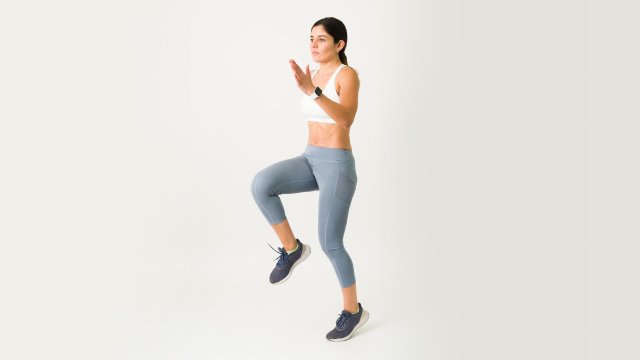Are you tired of slogging through long, monotonous workouts in pursuit of weight loss? If so, you’re not alone. Many fitness enthusiasts are seeking more efficient and effective ways to shed pounds and improve their overall fitness. One approach that has gained significant attention in recent years is High-Intensity Interval Training (HIIT). But does HIIT truly live up to the hype when it comes to weight loss? Let’s delve into the science to find out.
The HIIT Phenomenon
High-Intensity Interval Training, or HIIT for short, is a form of exercise characterized by short bursts of intense physical activity followed by brief periods of rest or low-intensity recovery. This approach stands in stark contrast to traditional steady-state cardio exercises, such as jogging or cycling at a moderate pace for an extended period.
HIIT workouts are known for their brevity. A typical HIIT session can range from just a few minutes to around 30 minutes, making it an attractive option for individuals with busy schedules. Despite the relatively short duration, HIIT has garnered a reputation as a highly effective method for weight loss. But what’s the science behind this effectiveness?
Metabolic Boost and EPOC
One of the key mechanisms through which HIIT aids in weight loss is its impact on metabolism. HIIT has been shown to elevate the resting metabolic rate, which means you burn more calories even when you’re at rest. This phenomenon is often attributed to Excess Post-Exercise Oxygen Consumption (EPOC), also known as the “afterburn effect.”
After a high-intensity workout, your body continues to consume oxygen at an elevated rate as it works to repair muscle tissue and restore balance. This increased post-exercise oxygen consumption translates into extra calorie expenditure. In a study published in the International Journal of Exercise Science, researchers found that HIIT workouts can increase EPOC significantly compared to moderate-intensity exercise, suggesting that HIIT can contribute to more calories burned throughout the day.
Fat Loss and HIIT
When it comes to weight loss, fat loss is the primary goal for most individuals. HIIT has shown remarkable efficacy in targeting fat loss. In a study published in the Journal of Obesity, researchers found that participants who engaged in HIIT for 12 weeks experienced a significant reduction in both visceral and subcutaneous fat, compared to those who engaged in moderate-intensity continuous training. Visceral fat, in particular, is the type of fat stored deep within the abdomen and is associated with various health risks, including heart disease and diabetes.
The mechanism behind HIIT’s ability to promote fat loss is multifaceted. First, the intensity of HIIT exercises stimulates the release of catecholamines, such as adrenaline and noradrenaline. These hormones play a crucial role in mobilizing fat stores for energy. Additionally, HIIT workouts improve insulin sensitivity, making it easier for the body to utilize glucose for energy instead of storing it as fat.
Preserving Lean Muscle Mass
One concern with traditional weight loss methods, especially prolonged calorie restriction and excessive cardio, is the potential loss of lean muscle mass. Losing muscle can have a negative impact on your metabolism and overall strength. The good news is that HIIT has been shown to help preserve lean muscle while promoting fat loss.
A study published in the Journal of Strength and Conditioning Research found that individuals who incorporated HIIT into their weight loss programs experienced less muscle loss compared to those who engaged in continuous moderate-intensity aerobic exercise. This preservation of lean muscle is likely due to the anaerobic nature of HIIT, which challenges the muscles and encourages their growth and maintenance.
Practical Tips for Incorporating HIIT
Now that we’ve explored the science behind HIIT and its impact on weight loss, let’s discuss how you can incorporate HIIT into your fitness routine for maximum benefit:
- Start Gradually: If you’re new to HIIT, begin with shorter sessions and progressively increase the intensity and duration over time to prevent overexertion and minimize the risk of injury.
- Choose Your Workouts Wisely: HIIT workouts can be adapted to various activities, including running, cycling, bodyweight exercises, and even swimming. Select exercises that you enjoy to maintain consistency.
- Mix It Up: Avoid doing the same HIIT routine every day. Variation helps prevent boredom and ensures that you challenge different muscle groups.
- Rest and Recovery: Adequate rest and recovery are crucial in a HIIT regimen. Ensure you allow your body time to recuperate between sessions.
- Consult a Professional: If you have any underlying medical conditions or are new to exercise, consult with a fitness professional or healthcare provider before starting a HIIT program.
In conclusion, High-Intensity Interval Training (HIIT) is not just a fitness trend; it’s backed by solid scientific research as an effective tool for weight loss. Its ability to boost metabolism, promote fat loss, and preserve lean muscle makes it a valuable addition to any fitness routine. Remember that while HIIT can yield impressive results, it’s essential to approach it with caution and gradually build up your intensity and duration to suit your fitness level and goals.
So, if you’re looking for a time-efficient way to shed those extra pounds and achieve your fitness goals, give HIIT a try—it might just be the game-changer you’ve been searching for.
